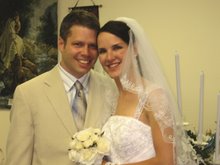Day of Judgment
It is believed that on Rosh Hashanah God reviews the deeds of all people, and decides what the coming year will be like. If the verdict is a bad one, then we have until Yom Kippur to repent, and have the judgment changed.
Would it make sense then that those written in the book of life would wait until Yom Kippur before the judgment was carried out? Those left behind would need the 10 days to have a chance to repent…
The concluding service of Yom Kippur, known as Ne'ilah, is one unique to the day. It usually runs about 1 hour long. The ark (a cabinet where the scrolls of the Torah are kept) is kept open throughout this service, thus you must stand throughout the service. There is a tone of desperation in the prayers of this service. The service is sometimes referred to as the closing of the gates; think of it as the "last chance" to get in a good word before the holiday ends. The service ends with a very long blast of the shofar. See Rosh Hashanah for more about the shofar and its characteristic blasts.
Ne'ilah
The last prayer service of Yom Kippur is known as Ne'ilah, which means "closing" or "locking" in Hebrew. Recited during late afternoon and twilight, it expresses the feeling that the special Heavenly gates, that have stood open all day to receive our prayers, are gradually being closed. The community is now filled with confidence that their sins have been forgiven, and that they can begin the new year in a state of spiritual purity.
If we need Jesus as our High Priest in the order of Melchizedek to intercede for us, the we must wait until Yom Kippur when he can go into the Holy of Holies and also where the incense of our prayers can be given.
Holy of Holies
Inside the Temple of Jerusalem was a room that was so holy that it was entered only one time during the whole year, on Yom Kippur, and only by the High Priest (Cohen Gadol). Inside the Holy of Holies, the High Priest would light a bowl of fragrant incense and pray for forgiveness.
Incense
When the High Priest (Cohen Gadol)) entered the Holy of Holies on the Day of Atonement, he would burn fragrant incense, as it says in the Torah (Leviticus 16:12-13):
Why is the Book of Jonah read on Yom Kippur? The Book of Jonah was selected for the haftarah reading for the Mincha (afternoon) service on Yom Kippur because God is represented there as the God of all nations. The Book of Jonah also addresses itself to another High Holy Days theme: that a person can abandon one’s evil ways, accept responsibility for one’s own actions, and return to God.
Many believe that the Rapture will produce the jealousy of Israel as God turns his attention to them. They realize they have given up something of great value. Jonah is a great book portraying this since it was Jonah who knew God will be merciful and did not want to prophesy to Nineveh. What is Yizkor? Yizkor is a service which recalls loved ones who have died. Yizkor usually takes place on Yom Kippur afternoon, after the Afternoon Service and before the Ne’ilah, or closing service. What is the Ne’ilah service? Yom Kippur services conclude with Ne’ilah, from the Hebrew “to lock,” referring to the symbolic closing of heaven’s gates and the “book of life.” Many people stand throughout this short service, which ends with a final shofar blast. Ne’ilah is followed by a Havdalah, the ceremony that ends this holiday as well as the Sabbath.
Closing of the Gates is a great analogy to the Rapture. A closing of the gates, the King’s gates, the Open Door…Why do the rabbis and cantors wear white on Yom Kippur; why do we cover the Torah scrolls with white covers? It is customary to wear white on the holiday, which symbolizes purity and calls to mind the promise that our sins shall be made as white as snow (Isaiah 1:18). Traditionally, Jews are buried in plain white garments. Wearing white on Yom Kippur reminds us of our mortality. Some wear sneakers or other rubber-soled shoes out of deference to the ancient practice of avoiding leather shoes, which were a symbol of luxury.
Wearing white is what the Saints do in heaven after the Rapture.
Saturday, September 15, 2007
Subscribe to:
Post Comments (Atom)


No comments:
Post a Comment